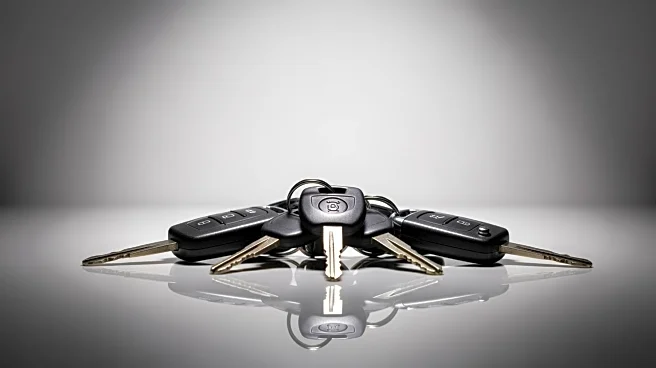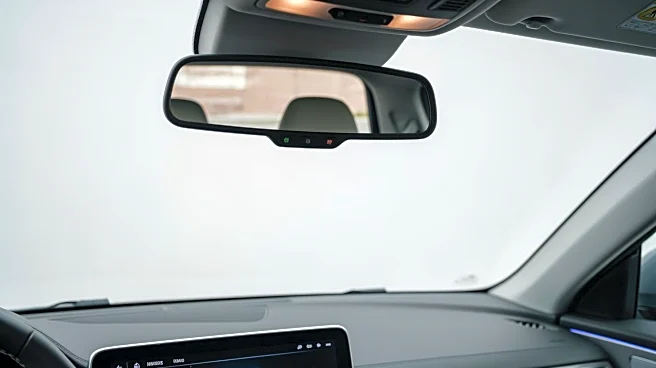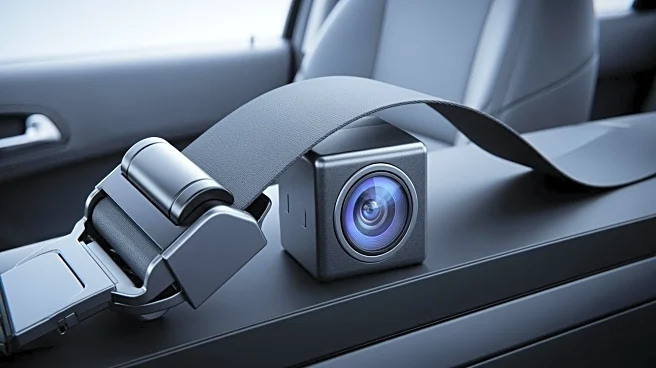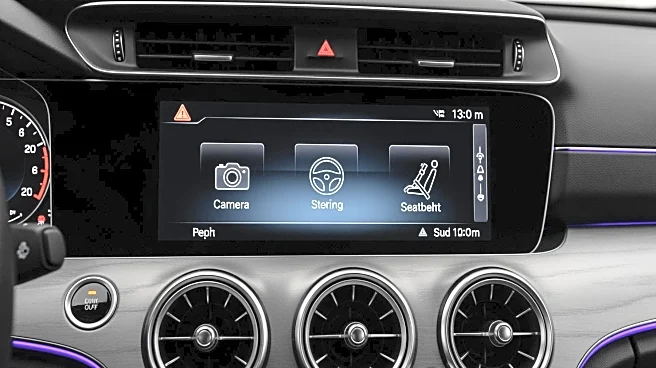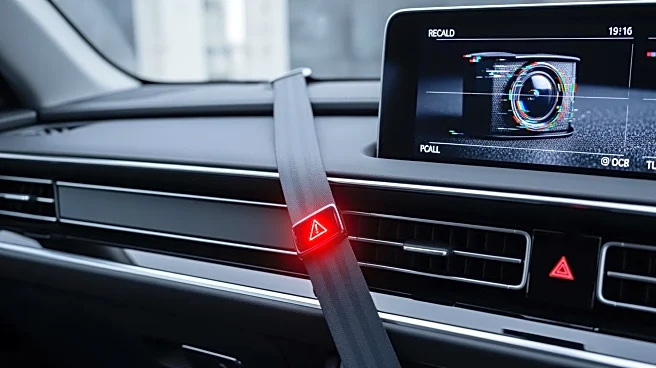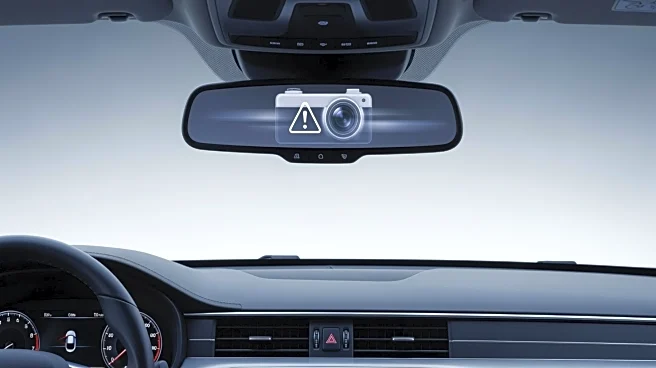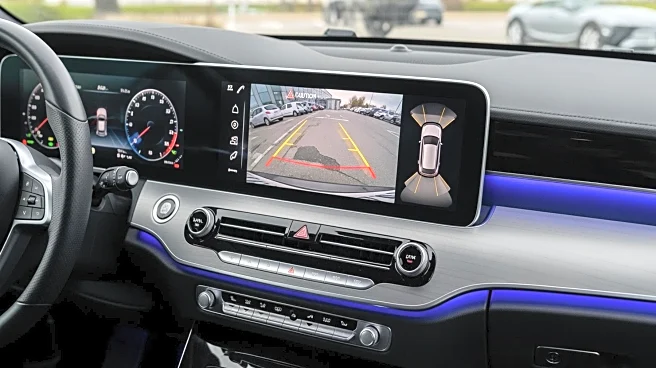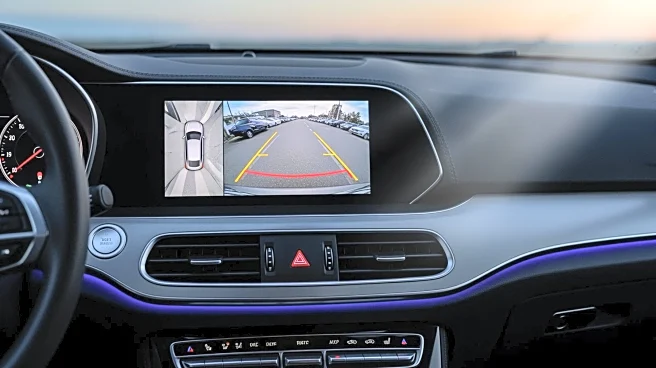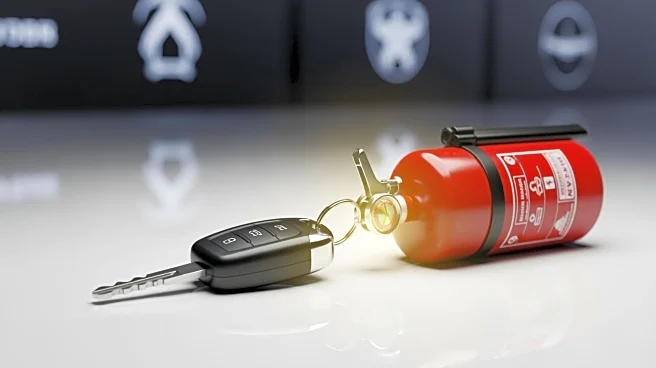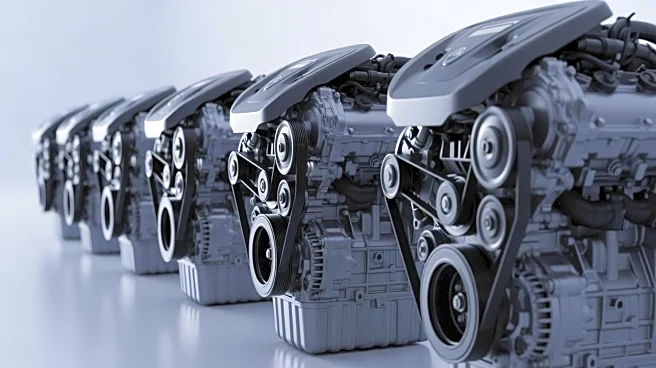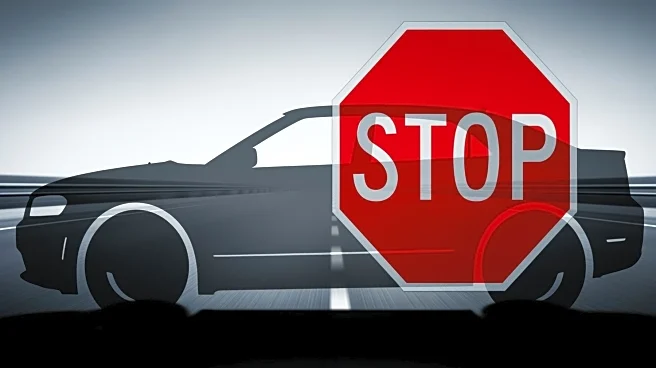What's Happening?
Ford Motor Company has announced two significant recalls affecting over 624,000 vehicles due to safety concerns related to seatbelts and rearview mirror cameras. The National Highway Traffic Safety Administration
(NHTSA) issued a notice on September 12, highlighting that water and road salt could corrode the front seat belt anchor pretensioner cables, potentially increasing the risk of a crash or injury. This recall affects 332,778 units of the 2015-2017 Ford Mustang. Additionally, a second recall involves 291,901 pickup trucks from the 2020-2022 model years, including the Ford F-250 SD, Ford F-350 SD, and Ford F-450 SD. The issue pertains to the rearview camera image, which may not display properly under certain lighting conditions, reducing the driver's visibility. Ford reported these issues to the NHTSA, which formally acknowledged them in a letter dated October 16.
Why It's Important?
The recalls are significant as they address potential safety hazards that could lead to accidents or injuries. The seatbelt issue, in particular, poses a direct risk to vehicle occupants if the pretensioner cables fail during a crash. The rearview camera problem could impair a driver's ability to see behind the vehicle, increasing the likelihood of collisions, especially in low-light conditions. These recalls highlight the importance of vehicle safety standards and the role of regulatory bodies like the NHTSA in ensuring manufacturers address potential defects. For Ford, addressing these issues is crucial to maintaining consumer trust and avoiding potential legal liabilities.
What's Next?
Ford plans to notify affected vehicle owners via mail, with letters expected to be sent out this month. The company will offer repairs at no additional cost to the owners. For the seatbelt recall, dealers will replace the front seat belt anchor pretensioner assemblies and remove parts of the carpet and underlayment that contact the cables. For the rearview camera recall, dealers will update the image processing module software. These steps are essential to mitigate the risks associated with the identified defects and ensure the safety of Ford's customers.
